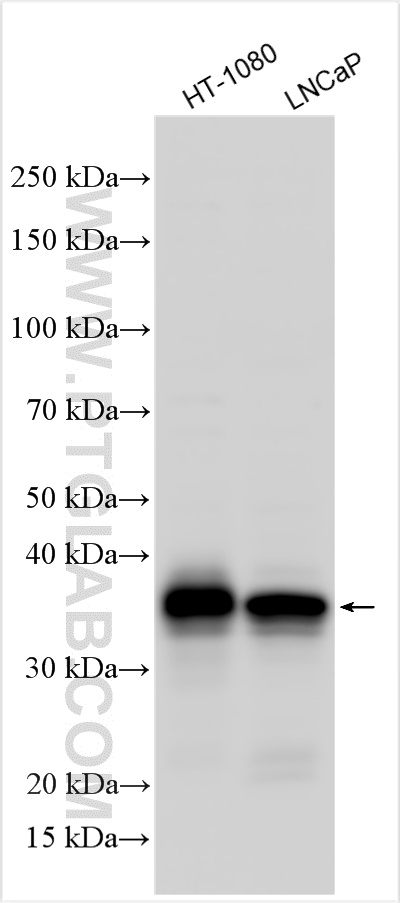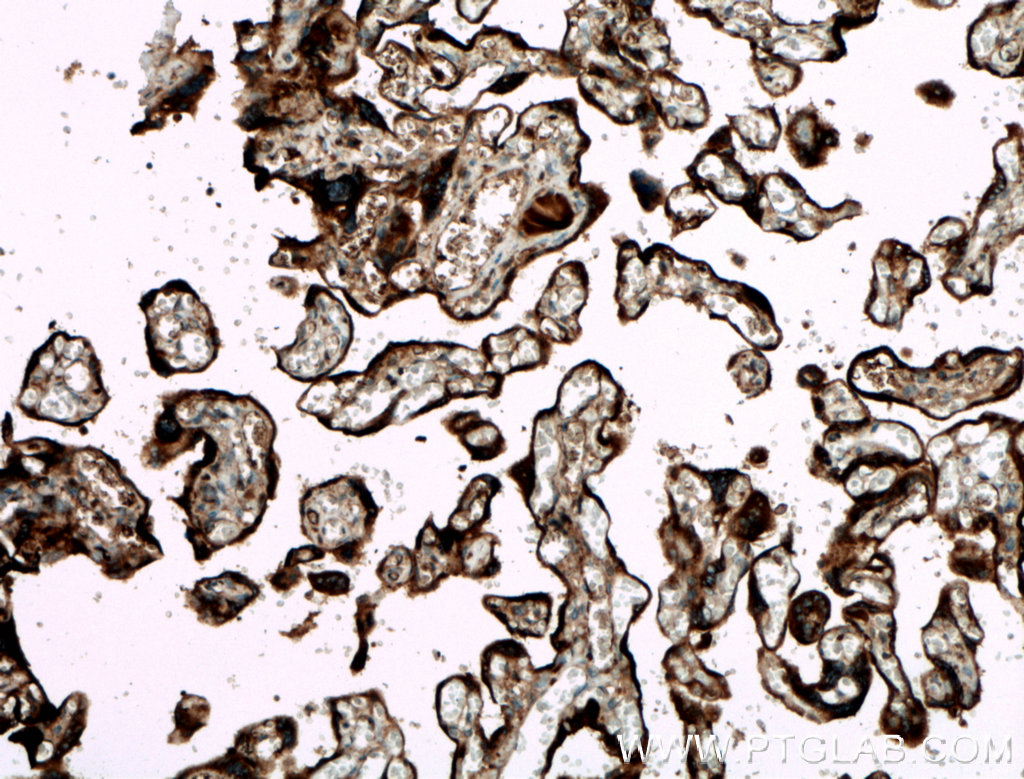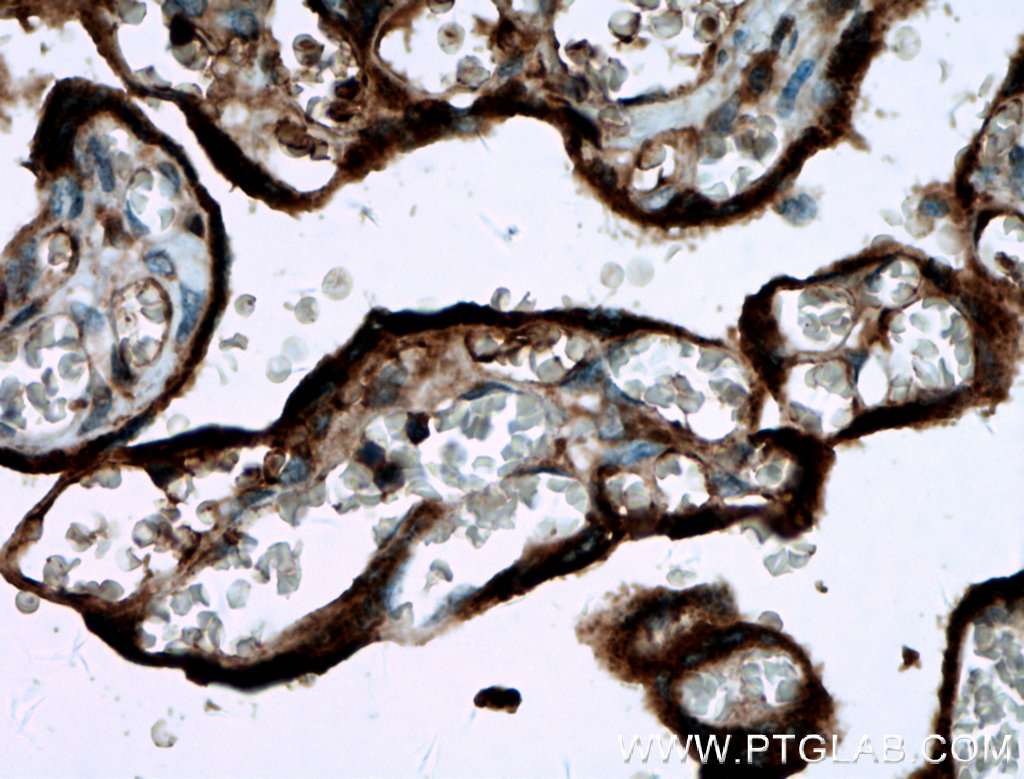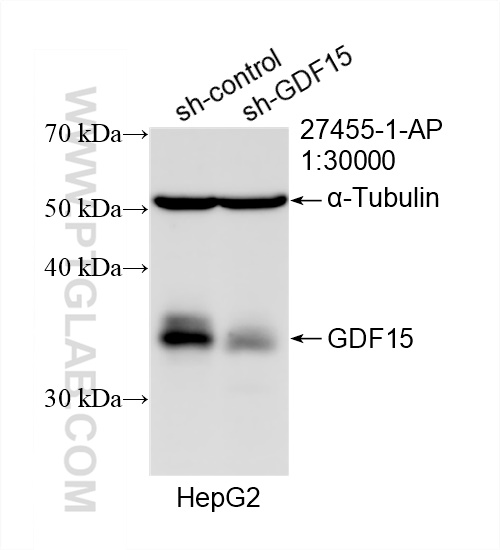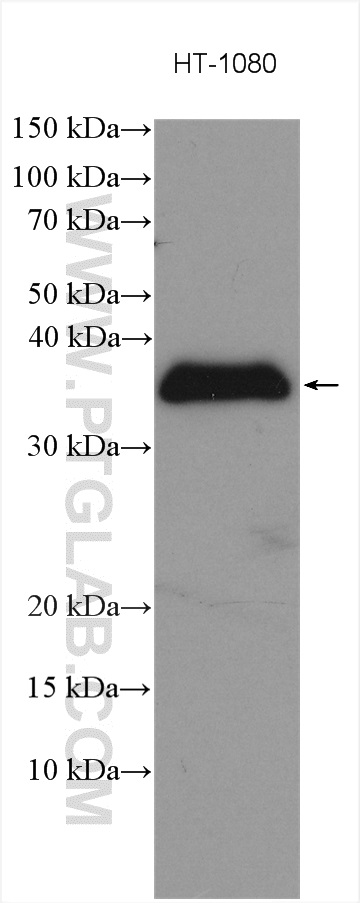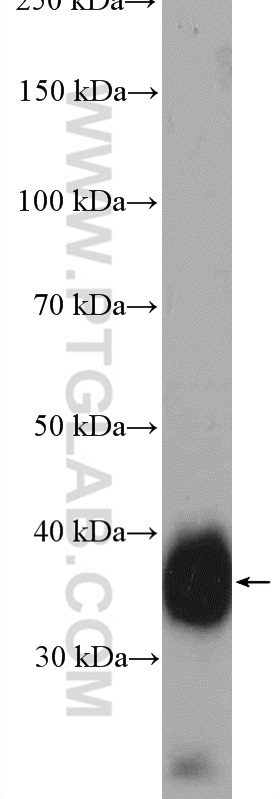- Featured Product
- KD/KO Validated
GDF-15 Polyclonal antibody
GDF-15 Polyclonal Antibody for WB, IHC, ELISA
Host / Isotype
Rabbit / IgG
Reactivity
human and More (2)
Applications
WB, IHC, ELISA and More (1)
Conjugate
Unconjugated
验证数据展示
经过测试的应用
| Positive WB detected in | HT-1080 cells, HepG2 cells, human placenta tissue, LNCaP cells |
| Positive IHC detected in | human placenta tissue Note: suggested antigen retrieval with TE buffer pH 9.0; (*) Alternatively, antigen retrieval may be performed with citrate buffer pH 6.0 |
推荐稀释比
| Application | Dilution |
|---|---|
| Western Blot (WB) | WB : 1:2000-1:10000 |
| Immunohistochemistry (IHC) | IHC : 1:50-1:500 |
| It is recommended that this reagent should be titrated in each testing system to obtain optimal results. | |
| Sample-dependent, Check data in validation data gallery. | |
产品信息
27455-1-AP targets GDF-15 in WB, IHC, IF, ELISA applications and shows reactivity with human samples.
| Tested Applications | WB, IHC, ELISA Application Description |
| Cited Applications | WB, IHC, IF |
| Tested Reactivity | human |
| Cited Reactivity | human, mouse, rat |
| Immunogen | GDF-15 fusion protein Ag26760 种属同源性预测 |
| Host / Isotype | Rabbit / IgG |
| Class | Polyclonal |
| Type | Antibody |
| Full Name | growth differentiation factor 15 |
| Synonyms | GDF15, GDF 15, NAG-1, MIC-1, Growth/differentiation factor 15 |
| Calculated Molecular Weight | 34 kDa |
| Observed Molecular Weight | 34 kDa |
| GenBank Accession Number | BC008962 |
| Gene Symbol | GDF15 |
| Gene ID (NCBI) | 9518 |
| RRID | AB_2880875 |
| Conjugate | Unconjugated |
| Form | Liquid |
| Purification Method | Antigen affinity purification |
| UNIPROT ID | Q99988 |
| Storage Buffer | PBS with 0.02% sodium azide and 50% glycerol pH 7.3. |
| Storage Conditions | Store at -20°C. Stable for one year after shipment. Aliquoting is unnecessary for -20oC storage. |
背景介绍
实验方案
| Product Specific Protocols | |
|---|---|
| WB protocol for GDF-15 antibody 27455-1-AP | Download protocol |
| IHC protocol for GDF-15 antibody 27455-1-AP | Download protocol |
| Standard Protocols | |
|---|---|
| Click here to view our Standard Protocols |
发表文章
| Species | Application | Title |
|---|---|---|
Gastroenterology Hepatic Stellate Cells in Hepatocellular Carcinoma Promote Tumor Growth Via Growth Differentiation Factor 15 Production.
| ||
Nat Commun Dual functions of SPOP and ERG dictate androgen therapy responses in prostate cancer. | ||
Cancer Lett SULF2 enhances GDF15-SMAD axis to facilitate the initiation and progression of pancreatic cancer. | ||
Oxid Med Cell Longev Cyclic Polypeptide D7 Protects Bone Marrow Mesenchymal Cells and Promotes Chondrogenesis during Osteonecrosis of the Femoral Head via Growth Differentiation Factor 15-Mediated Redox Signaling. | ||
Cancers (Basel) GDF15 Is an Eribulin Response Biomarker also Required for Survival of DTP Breast Cancer Cells.
| ||
Mol Neurobiol Exosomes Derived from Meningitic Escherichia coli-Infected Brain Microvascular Endothelial Cells Facilitate Astrocyte Activation |
